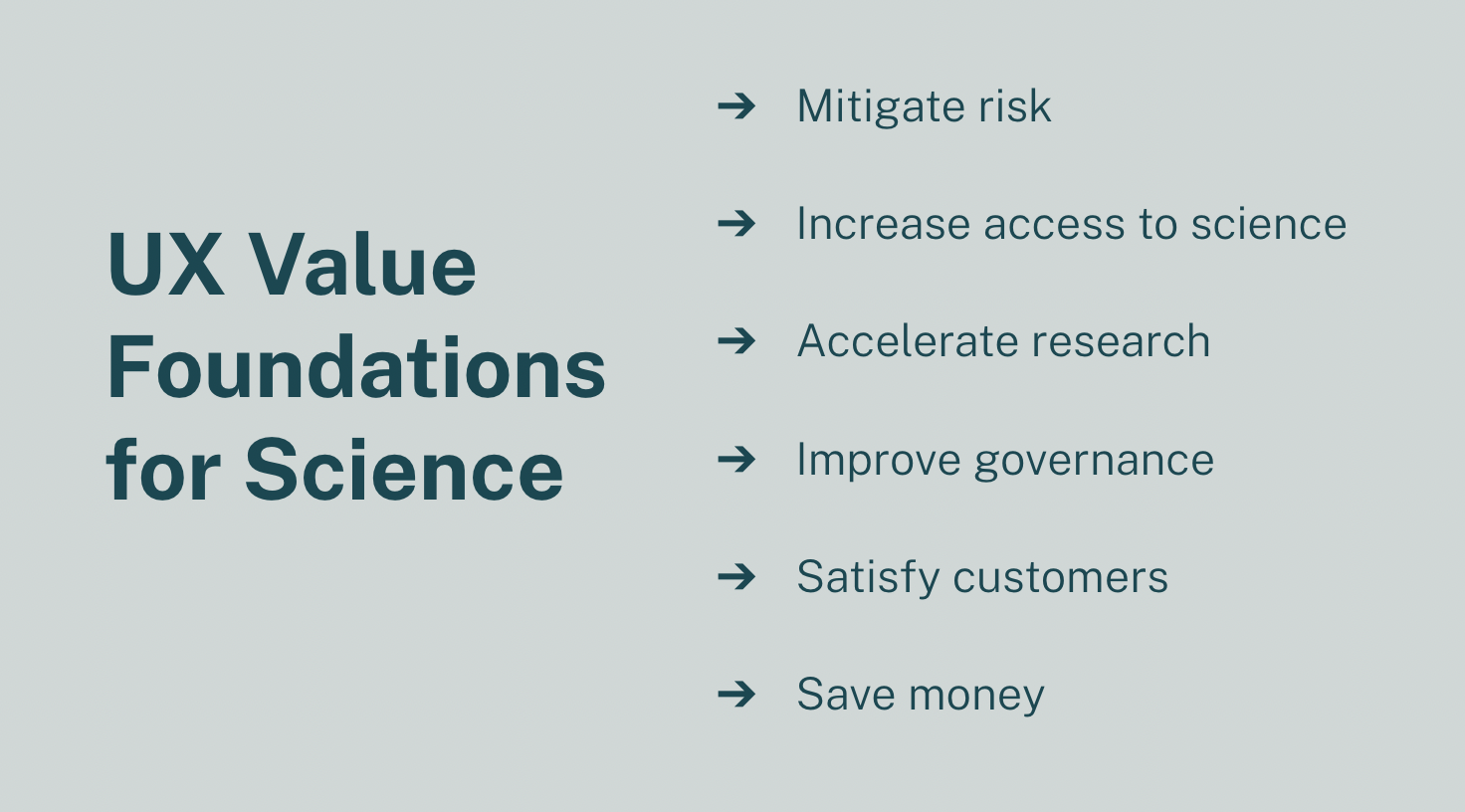making the case for design in science
When research teams integrate UX design into their process, they gain more than time and money. With UX tools, teams can decrease project risk, enhance access to science, accelerate discoveries, strengthen governance, and improve problem framing.
With all these compelling benefits of design, why then are so many research teams struggling to adopt it?
The goal of last month's Byte-sized RSE event was to spark conversation around this challenge, introduce a broad yet actionable framework for understanding the value of design, and equip attendees with strategies for advocating for design resources to their principal investigators.
Thanks for reading Pluriverse Work! Subscribe for free to receive new posts and support my work.
The Workshop Experience
The workshop opened with a brief introduction to UX design, providing attendees with a shared foundation for discussion. While I typically favor the term experience design, I opted for UX design in this context to align with the language familiar to the research software engineering (RSE) community.
After aligning on definitions, we then went on a tour through UX Value Foundations for Science, covering the types of value that UX design can offer and lightweight options to get started.
With shared definitions and an applicable framework in hand, we moved on to practice pitching the value of design. Recognizing that not all attendees are inclined to participate in group discussions, I provided two options: join a breakout room or stay in the main room to work independently.
The instructions were straightforward: using a prepared template, draft a few pitches for design resources using the value statements provided earlier.
![A slide with the text: UX Pitch Template: [Audience] struggles with [problem], leading to [negative impact]. Our UX approach reduces [problem] by [%/solution], ultimately allowing them to [benefit].](https://www.meagdoherty.com/content/images/2025/02/652385f8-3621-44cd-8468-aca515ad3d27_1502x822.png)
Workshop Takeaways
Following the breakout sessions, we regrouped to reflect on how the activity felt rather than focusing solely on the outputs. Despite not requiring attendees to read out their results, a few observations stood out:
Understanding your audience is the majority of the work. Attendees reflected that starting with the audience question (who do I need to convince, and of what?) made the rest of the mad lib style exercise easy. In future iterations of this workshop, I would add ecosystem or stakeholder mapping as pre-requisite knowledge or incorporate into the workshop introduction.
The UX Value Foundations for Science is a strong starting point. By outlining the various value points specifically tied to the research process, the framework gave some attendees the confidence to go onto advocate for more design based on these ideas. One attendee shared that attending the workshop was worth it for just that single slide. (A sure sign of useful content)

We would benefit from more research about the usability of research tools. One attendee wondered why there wasn't more research on the usability of research tools. When writing grants, they need to justify their software choices but struggle to find credible sources that compare tools. This gap highlights an opportunity for more dedicated research on how usability impacts research software adoption and effectiveness.
Personal Reflections
Having led and participated in several Design 101 sessions with RSE groups, I aimed for this workshop to go beyond introductory human-centered design content and provide attendees with hands-on strategies for integrating UX into their research process.
It was great to see more than 50 people sign up and about half of that number attend the workshop. This workshop will be the first of many opportunities this year to continue to build knowledge, capacity, and expertise to incorporate design in the research process.
For more on these opportunities, be sure to follow the work of my colleagues over at the STRUDEL project (Berkley Lab, Berkeley Institute for Data Science, Superbloom, Carpentries, 2i2c, UC Santa Cruz Open Source Program Office) who are investing real energy and expertise into this problem supported by Sloan Foundation.
My biggest reflection from this experience is that as a community of RSEs and designers, we need more social proof that design is a worthwhile investment.
By sharing our successes and lessons learned, we can collectively refine the value proposition for UX in research, making it easier for teams to adopt and, ultimately, improve the way we do science.
If you liked this post and you want to continue the conversation, please join me and many other wonderful colleagues on the US-RSE Slack UX Working Group.
-
And finally, a big thanks to Jeremy Cohen, Steve Crouch, and Eirini Zormpa for inviting me into such a wonderful series!
Thanks for reading Pluriverse Work! Subscribe for free to receive new posts and support my work.